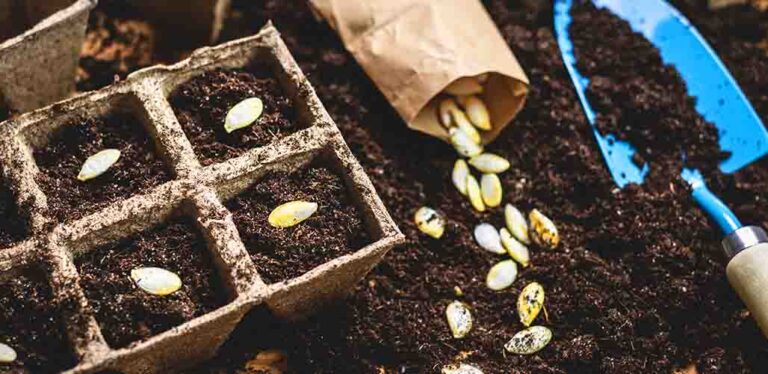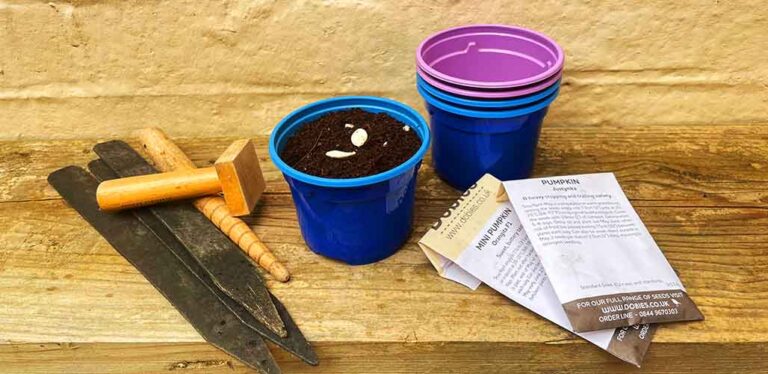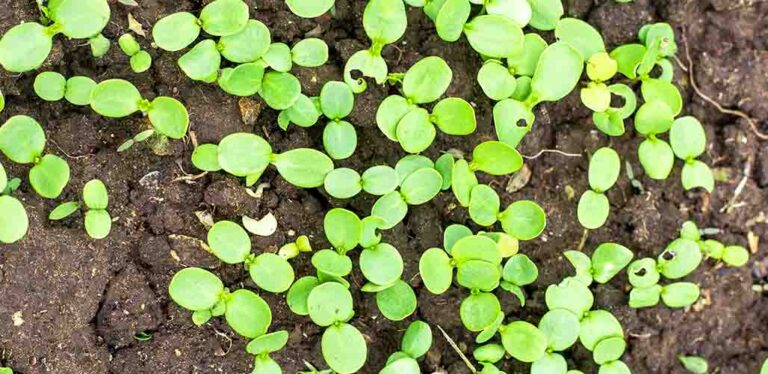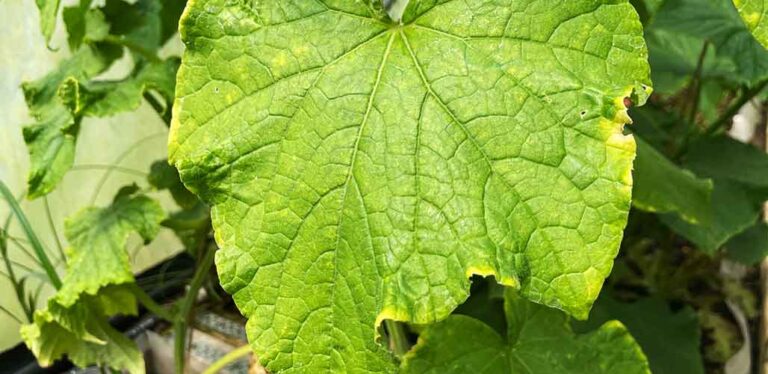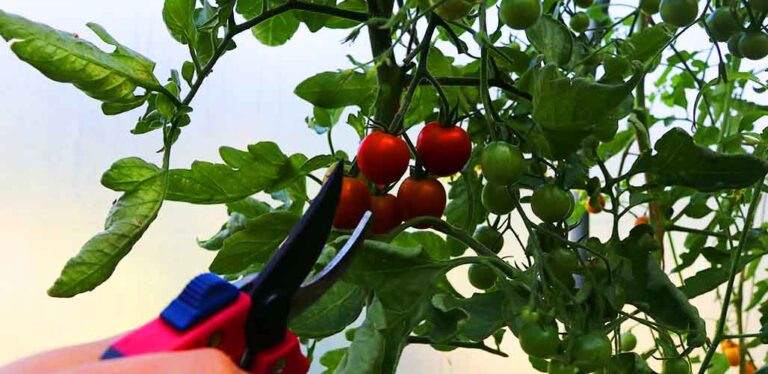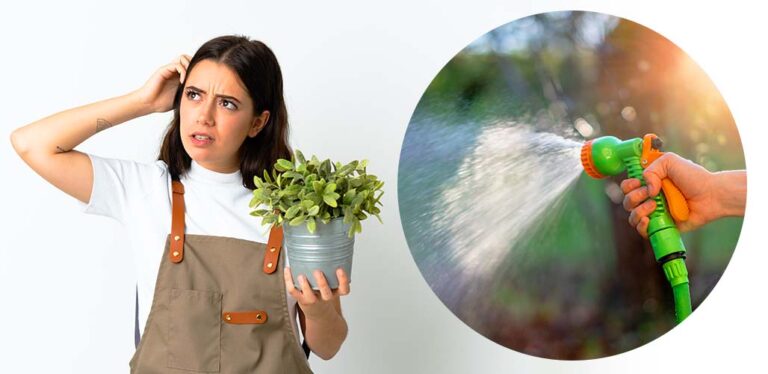Do Pumpkins Need A Lot Of Water?
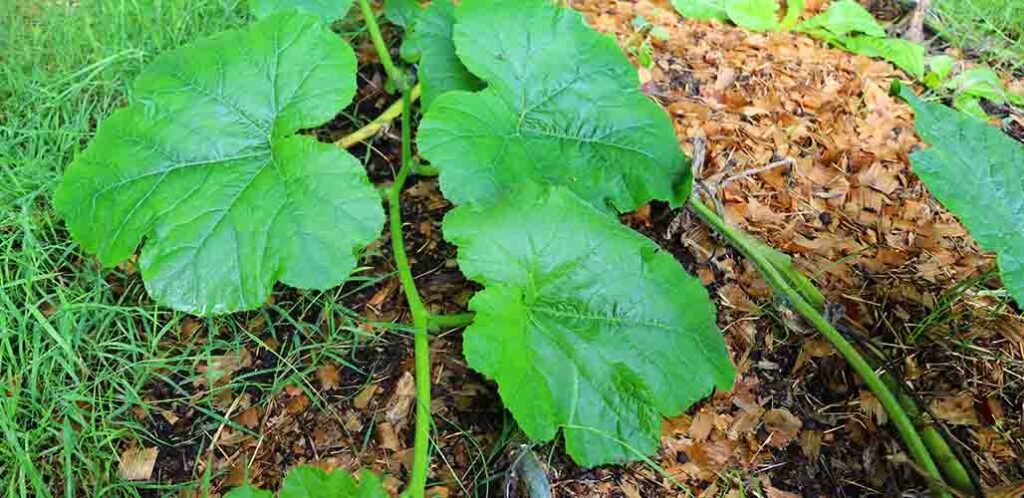
Do pumpkins need a lot of water, or can they tolerate a bit of drought? Pumpkins are 70-90% water, so unsurprisingly the growing vines need a lot of watering. In fact when I calculated exactly how much water they need, I had to triple check my math, because the number seemed so big! But, overwatering can cause as many problems for your pumpkins as underwatering. So I’m here to share what I’ve learned about keeping pumpkins evenly watered to exactly the right degree.
- Do pumpkin plants need a lot of water?
- How much water do pumpkins need?
- How often should you water pumpkins?
- Do pumpkins need to be watered every day?
- Can pumpkins be overwatered?
- Do pumpkins need a lot of water to make female flowers?
- Top tips for watering your pumpkin more efficiently
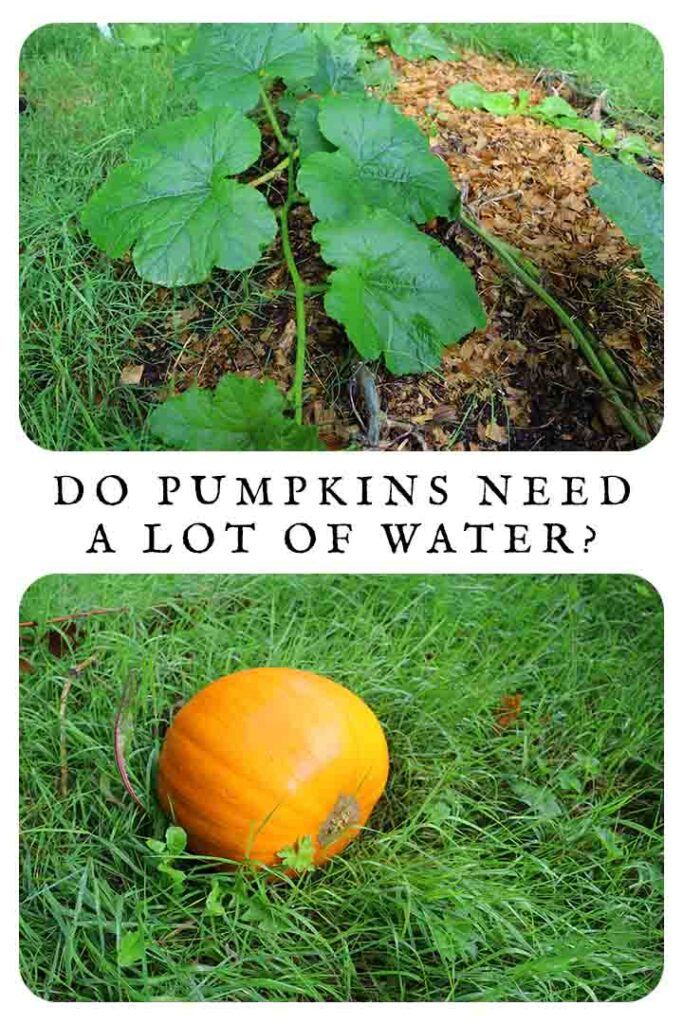
Do pumpkin plants need a lot of water?
Ripe pumpkins are 70% to 90% water depending on variety – and if you’ve ever felt how heavy they are, you won’t be surprised to hear it! They grow on long trailing vines with huge umbrella-like leaves. It takes a lot of water to sustain such a large plant, offset evaporation from the surface of their big leaves, and grow great big fruit as well. So it’s somewhat predictable that these are thirsty plants.
And they do need a lot of water. Luckily for us homesteaders though, pumpkins are also a commercially important crop. Even in some very arid countries, such as Turkey. Which means there has been lots of research into how much water pumpkins really need, how they are affected by drought, and how to irrigate them efficiently without a drop of water wasted. I’ve been down the rabbit hole of pumpkin irrigation research for you, and this is everything I’ve learned combined with my own decade of experience…
How much water do pumpkins need?
The average pumpkin plant growing in open ground needs 1 inch of rainfall per week to achieve optimum growth. Assuming it has a 3-foot radius of growing space around it (the growing conditions recommended for most varieties), this means 16 gallons of water a week! That’s a lot of water by anyone’s standards – eight trips to the tap with my largest watering can in fact.
How much water your own pumpkins need may vary according to some factors, including:
- how quickly your soil drains
- if they are planted on level ground, or at the top or bottom of a slope
- the variety – large carving pumpkins need more water than small edible pumpkins
- and your climate.
Interestingly, pumpkins which are consistently underwatered still survive pretty well. This is probably because they put down deep tap roots from the start, to seek out water. But, they do produce smaller fruits in the end, with fewer seeds. However, acutely water-stressed plants which reach the point of wilting are more susceptible to letting in fungal infections, like the dreaded powdery mildew.
How often should you water pumpkins?
Pumpkin vines are pretty sensitive to how often they are watered. And how much and how often they are watered also influences how well they cope with water stress. The best way to water pumpkins is very thoroughly, once or twice a week. Watering them deeply so the water soaks right down into the soil encourages them to put down deep roots. That means if you miss a day for any reason, your vines are better equipped to cope.
Do pumpkins need to be watered every day?
On the other hand, watering pumpkins plants every day is not ideal. Vines which are watered every day only put down shallow roots, since it requires less energy, and water is always there when they need it. This means they are more vulnerable to periods of drought, for example due to heatwaves, or because you go away for a few days. They are also more sensitive to temperature changes near the surface of the soil.
Can pumpkins be overwatered?
Yes! Despite having relatively high water demands compared to other crops, it is still possible to overwater a pumpkin. This is particularly a risk if you grow your pumpkins in heavy clay soils, or pots without adequate drainage, because it causes waterlogging. When soil is waterlogged, it causes hypoxia, or lack of oxygen in the soil, because the small air pockets in the soil fill up with water instead. Pumpkins’ roots need oxygen from those air pockets in the soil to produce energy. Without it they die off again.
In light soils too much water can still cause problems, but they are likely to develop more gradually. Specifically, over watering in light soils can leach nutrients away from the plants roots, so that they grow more slowly over time. Overwatering can cause problems above ground too. When pumpkin plants sit in puddles of water, it can cause the base of the stem to rot, killing the plant.
Do pumpkins need a lot of water to make female flowers?
One of the most common obstacles pumpkin growers face is their plant not producing female flowers. The vines usually produce a flush of male flowers first, followed by a mix of male and female flowers. Female flowers can be identified by the small beginnings of a fruit behind the base of the petals.
Pumpkins only produce female flowers when all the environmental conditions are suitable for growing the fruit behind them to full size. Too little or too much water is one reason why a plant might not produce any female flowers. If the female flowers come too late in the season, there might not be enough time left for the fruit to swell and ripen anyway. It’s a really frustrating experience to grow a massive plant and not get a single fruit off it, so consistently watering your plants deeply every few days from the beginning is a valuable investment of your time!
Top tips for watering your pumpkin more efficiently
We’ve established now that pumpkins are like Goldilocks plants when it comes to water. Not too little, not too much – they like their irrigation to be just right. Here are my tips for striking that perfect balance, gleaned from all the most recent research and my own successes and failures:
- If your soil is light and sandy, and water drains through it quickly, or if your vegetable garden is on a slope, dig a shallow bowl in the ground and plant your pumpkin in the center. This will direct the water straight down the roots of the plant.
- If your soil is heavy and drains slowly, build a low mound with a moat around it, and plant your pumpkin at the top of the mound. Water the moat so that the water sinks into the ground around the plant, but doesn’t pool around the stem. Alternatively, sink a 6 inch clay pot into the ground next to the seedling, and water directly into that.
- Water your pumpkins early in the morning, while the ground is still cool. This means as much water as possible will soak into the ground rather than evaporating away. Then as the soil warms up, any water splashed on the leaves will dry, and a crust will form on the surface of the soil. This keeps the risk of moisture-borne infections invading your plant to a minimum.
- Mulch! Mulch around the base of your plant with compost, newspaper, straw or plastic membrane. This prevents moisture evaporating from the soil in hot weather, so there’s less pressure on you to keep replenishing it.
This article has more tips for getting started with pumpkins, and how to care for them from sowing to cropping.
Do Pumpkins Need A Lot Of Water? Summary
Pumpkins need about an inch of water a week, or 16 gallons per plant. It’s best to water them deeply every few days than lightly every single day. This will make them more tolerant of short periods of drought. If you’re growing your vines in a pot or heavy soil, take care not to over water them by accident.
Do you have a watering regime for your pumpkins which never lets you down? Tell us about it in the comments section down below. We’d love to know if the rule of thumb of 16 gallons per plant per week matches your experiences too.
Learn more
- Tips and tricks for growing pumpkins in a pot
- Why are my pumpkin leaves turning yellow?
- Understanding why some pumpkin fruits shrivel up
- The dreaded powdery mildew, and other causes of white spots of pumpkin leaves
- More about male and female flowers
References
- Bhattarai et al. Yield, water-use efficiencies and root distribution of soybean, chickpea and pumpkin under different subsurface drip irrigation depths and oxygation treatments in vertisols. Irrigation Science. 2008.
- Kulczynski & Michalowska. The Profile of Secondary Metabolites and Other Bioactive Compounds in Cucurbita pepo L. and Cucurbita moschata Pumpkin Cultivars. Molecules. 2019.
- Maughan et al. Vegetable Irrigation: Squash and Pumpkin. Utah University State Extension. 2015.
- Yavuz et al. Deficit Irrigation Effect on Yield Performance of Pumpkin in Semi-arid Middle
- Anatolian Region of Turkey. International Journal of Agriculture and Economic Development. 2017.

